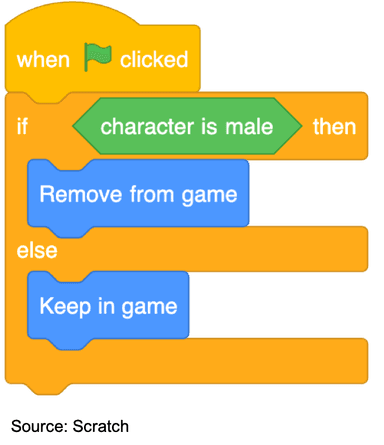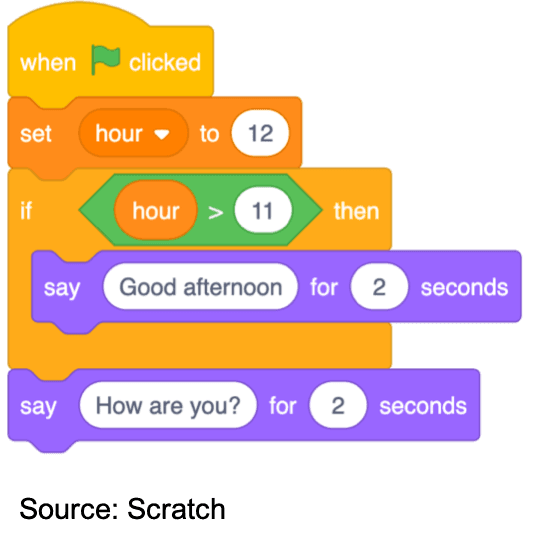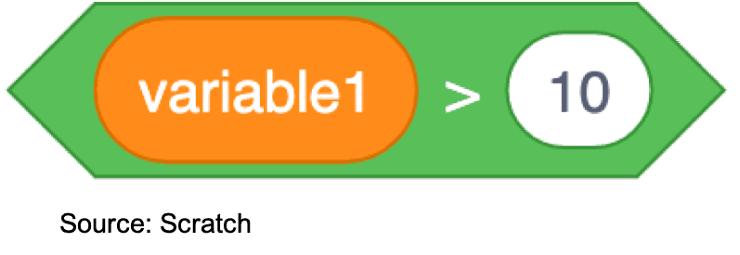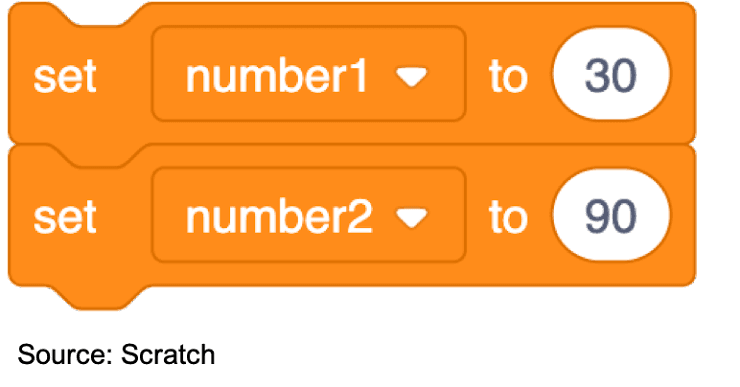Myths about teaching can hold you back
Learn why
These resources were made for remote use during the pandemic, not classroom teaching.
Switch to our new teaching resources now - designed by teachers and leading subject experts, and tested in classrooms.
Lesson details
Key learning points
- In this lesson, we will introduce logical and comparison operators. We will get practise in this by being given different expressions to decode to see if they evaluate to 'true' or 'false' before being tasked with modifying a 'Big Quiz' Scratch program.
Licence
This content is made available by Oak National Academy Limited and its partners and licensed under Oak’s terms & conditions (Collection 1), except where otherwise stated.
4 Questions
Q1.A selection statement evaluates an expression as what?
A selection statement evaluates an expression as what?
False
True
True and false
Q2.Which part of the following block of code would be considered the expression?
Which part of the following block of code would be considered the expression?

Remove from game
then
When green flag is clicked
Q3.The lines of code following the "else" will only be executed if the expression has evaluated to false
The lines of code following the "else" will only be executed if the expression has evaluated to false
False
Q4.What will be the output of this program when it is executed? (What will the sprite say?)
What will be the output of this program when it is executed? (What will the sprite say?)

Good afternoon
How are you?
Nothing will be outputted/said
6 Questions
Q1.The greater than symbol in the image below is an example of a comparison operator or a logic operator?
The greater than symbol in the image below is an example of a comparison operator or a logic operator?

Logic
Q2.The greater than symbol in the image below is an example of a comparison operator or a logic operator?
The greater than symbol in the image below is an example of a comparison operator or a logic operator?

Comparison
Q3.Does the following statement evaluate as True or False? - (30 < 50) or (30 > 50)
Does the following statement evaluate as True or False? - (30 < 50) or (30 > 50)
False
Q4.Does the following statement as True or False? - (20 = 20) and (15 < 15)
Does the following statement as True or False? - (20 = 20) and (15 < 15)
True
Q5.Does the following statement as True or False? - not (20 = 20)
Does the following statement as True or False? - not (20 = 20)
True
Q6.Which of the conditions would evaluate to ‘true’ with the following inputs? [2 answers]
Which of the conditions would evaluate to ‘true’ with the following inputs? [2 answers]

(number 1 > 30) and (number2 < 91)
(number 1 > 30) or (number2 < 90)

